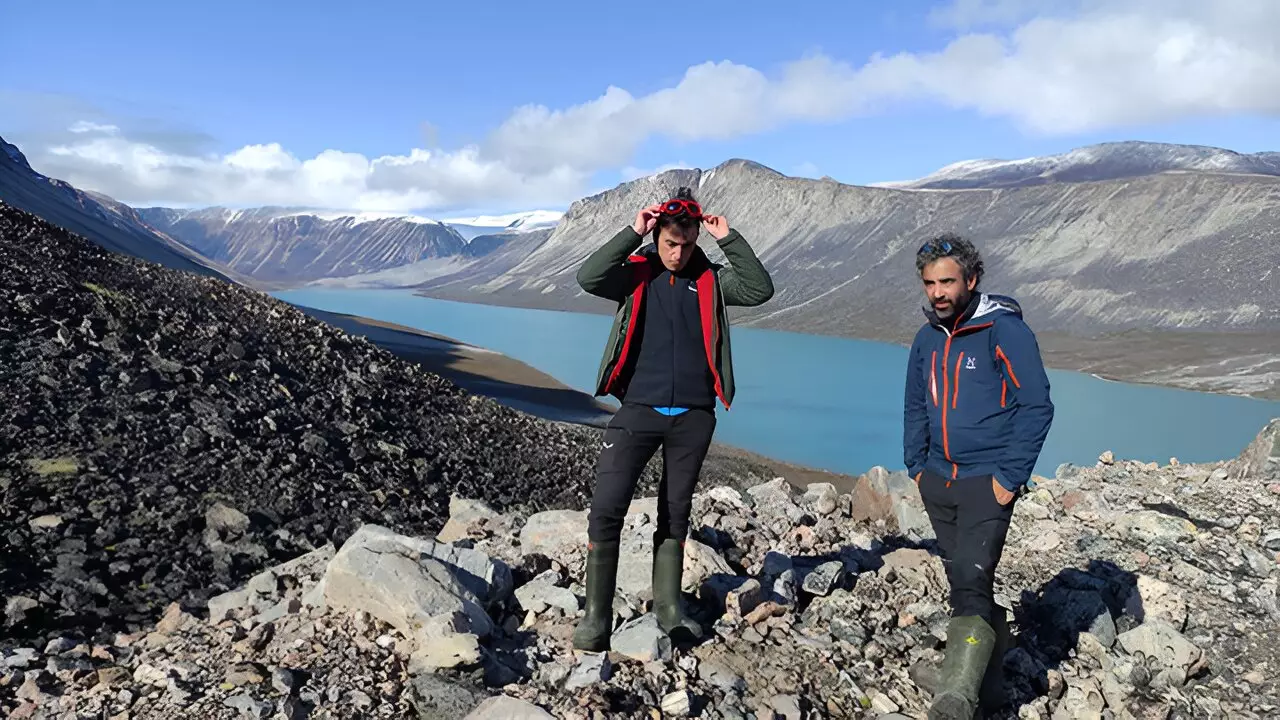Climate change has escalated the thinning of Greenland’s ice cover to a disturbing degree, raising alarm not only for the Arctic region but also for the broader global climatic landscape. Recent findings from a team at the University of Barcelona signal an urgent need for action, revealing that extreme melting events—intervals where substantial expanses of snow and ice undergo rapid melting—have surged almost twofold in comparison to historical data from 1950 to 1990. This study, published in the Journal of Climate, illustrates that the last ten years have borne witness to unprecedented peak melting years, with staggering figures such as 610 gigatons of ice lost during the summer of 2012 and 560 gigatons in 2019, equivalent to millions of Olympic-sized swimming pools.
The research was spearheaded by the Antarctica, Arctic and Alpine (ANTALP) group from the UB’s Department of Geography, under the guidance of faculties like Josep Bonsoms and Marc Oliva, as well as collaborators from the Pyrenean Institute of Ecology and the University of Liège. This in-depth investigation analyzed extreme melting episodes over the last seven decades and found that between 1980 and 2010, Greenland’s average annual meltwater loss reached about 300 gigatons—again, comparable to nearly 48 million Olympic-sized swimming pools each year. Alarmingly, the research indicates that around 40% of recent melting episodes have been classified as extreme, percentage figures climbing even higher—up to 50%—in the colder northern areas of the island.
The findings are linked directly to the overarching phenomenon of global warming, which has accelerated Arctic warming at a pace nearly four times that of global averages due to heightened greenhouse gas emissions. Researchers have pinpointed a direct correlation between intensified melting and episodes of extreme warmth, often caused by warmer, wetter air currents from more northern latitudes.
Moreover, these atmospheric phenomena contribute to stagnant air masses over Greenland, resulting in an increase in solar radiation and a lowering of albedo—this mirrors sunlight reflectance that originally served to keep the ice cool. Such shifts not only amplify melting but also introduce structural vulnerabilities in the ice sheet. As the study outlines, melting is increasingly occurring at higher altitudes of the ice cap—areas that remained stable between 1950 and 1990—leading to the formation of cracks and an elevated risk of sizable ice chunks detaching and flowing into the ocean.
The repercussions of Greenland’s melting ice extend well beyond its own boundaries; it plays a critical role in global sea level rise and has profound effects on atmospheric circulation dynamics. In essence, any alteration in Greenland’s ice cover could cascade into lasting impacts on the climate of Europe and even beyond. Changes in temperature and precipitation patterns not only pose potential threats to socio-economic activities and local ecosystems but could also catalyze increased climatic extremes in adjacent North Atlantic regions.
The urgency of the situation cannot be overstated. Projections indicate a likelihood of escalating melting episodes, further reinforcing the critical importance of mitigating greenhouse gas emissions.
This research serves as both a wake-up call and an impetus for immediate action. As international climate reports forecast significant warming within polar regions, it is imperative to heed these warnings and implement strategies that aim to curb emissions globally. The urgency to address climate change has never been clearer, as the consequences of inaction not only threaten polar ice caps but also the climatic stability of disparate regions around the world.
The intricate web linking Greenland’s melting ice to global climatic changes serves as a stark reminder of the interconnectedness of our planet’s systems and the pressing need for collective responsibility in tackling climate change head-on.

